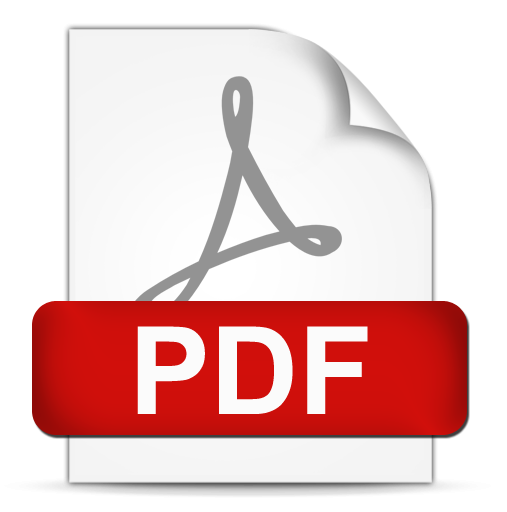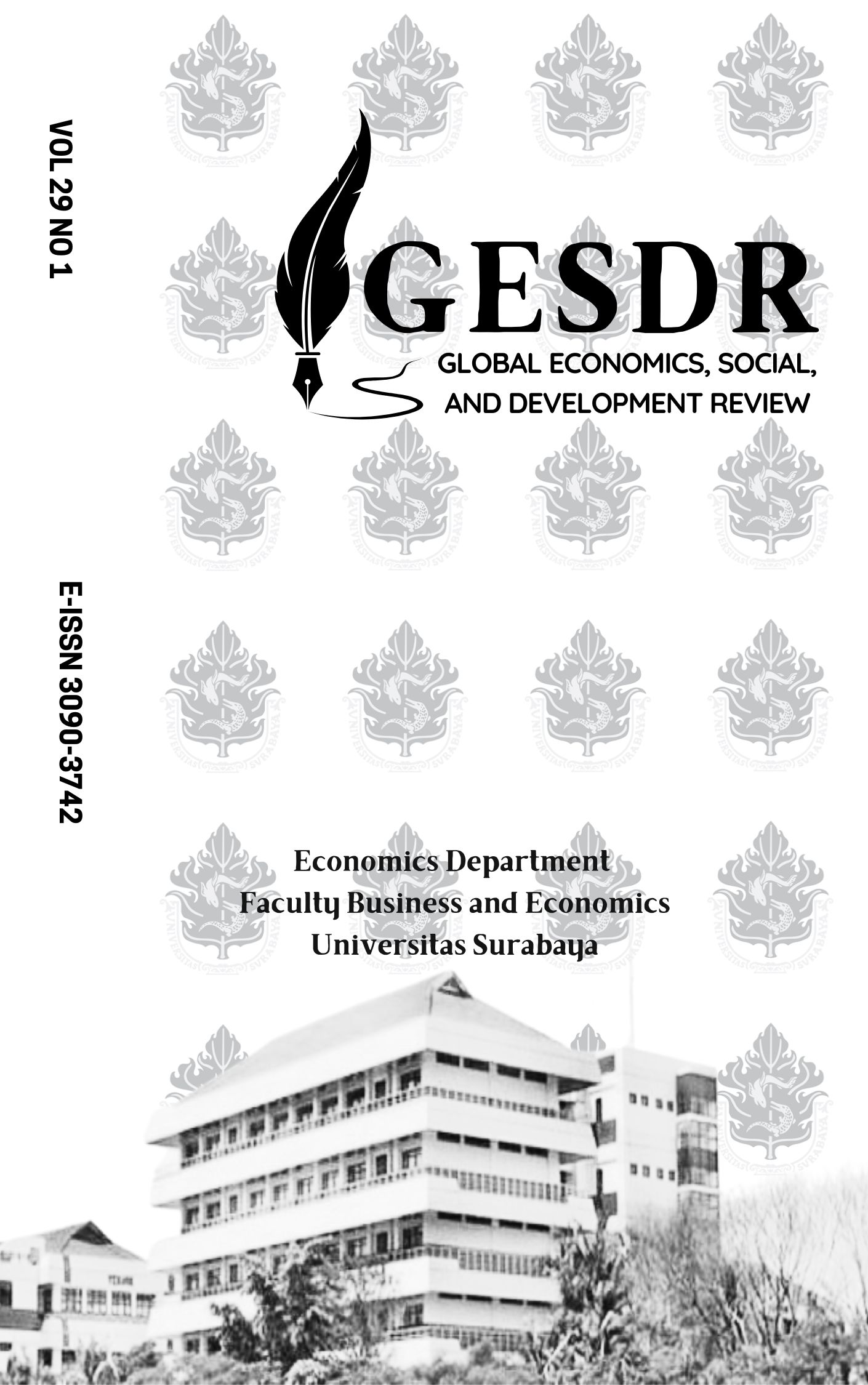21st Century Competition: State & Conglomeration-Driven Capitalism
 Abstract Views:
308 times
Abstract Views:
308 times
 PDF Downloads:
168 times
PDF Downloads:
168 times
Abstract
Indonesia needs to choose an economic model in order to realise its target of 8% GDP growth under Prabowo Subianto’s incoming administration. This paper compares both China’s state capitalism and South Korea’s conglomerate-driven capitalism for their relevance to Indonesia. China’s model, with a significant state intervention and SOEs prominent role, greatly driven industrialisation and average of 9% GDP growth over 30 years. Whilst South Korea’s model, dominated by conglomeration, focuses more on innovation in tech and exports, thus achieving a stable 4% average GDP growth. Employing data from the World Bank on FDI, exports, and GDP in constant 2015 USD, this paper examines both of these models using the Comparative Political-Economy framework. The findings showed that the China’s state capitalism to be more suitable for Indonesia due to capability of managing a large scale economy and the need of centralisation of resource control, infrastructure development and economic transitions. The blending of state control and market dynamics offers flexibility to tackle challenges in the economy. Nevertheless, the issues of inefficiencies must be in concern.
Downloads
References
Amsden, A. H. (1989). Asia's Next Giant: South Korea and Late Industrialization. Oxford University Press. https://doi.org/10.1093/0195076036.001.0001
Beach, D., & Pedersen, R. B. (2013). Process-Tracing Methods: Foundations and Guidelines. University of Michigan Press. https://doi.org/10.3998/mpub.10072208
Bremmer, I. (2010). The End of the Free Market: Who Wins the War Between States and Corporations?. Penguin Publishing Group. https://doi.org/10.1007/s12290-010-0129-z
Chang, H. J. (2003). Globalisation, Economic Development and the Role of the State. Zed Books.
Hall, P. A., & Soskice, D. (Eds.). (2001). Varieties of Capitalism: The Institutional Foundations of Comparative Advantage. Oxford University Press. https://doi.org/10.1093/0199247757.001.000
Heilmann, S., & Shih, L. (2013). The Rise of Industrial Policy in China, 1978–2012. Harvard-Yenching Institute Working Paper Series. https://www.harvard-yenching.org/research/hyi-working-paper-series-sebastian-heilmann-and-lea-shih/
Helleiner, E., & Lundblad, T. (2008). States, Markets, and Sovereign Wealth Funds. German Policy Studies, 4(3), 59–82. https://spaef.org/article/937/States-Markets-and-Sovereign-Wealth-Funds
Hsing, Y. (2010). The Great Urban Transformation: Politics of Land and Property in China. Oxford University Press. https://doi.org/10.1093/acprof:oso/9780199568048.001.0001
Huang, Y. (2008). Capitalism With Chinese Characteristics: Entrepreneurship and the State. Cambridge University Press. https://doi.org/10.1017/CBO9780511754210
Hyundai Motor Company. (2022). Annual Report 2021. https://www.hyundai-motor.cz/en/about-company/annual-report/
Jin, D. Y. (2016). New Korean Wave: Transnational Cultural Power in the Age of Social Media. University of Illinois Press. https://doi.org/10.5406/illinois/9780252039973.001.0001
Kalinowski, T. (2009). The Politics of Market Reforms: Korea's Path From Chaebol Republic to Market Democracy and Back. Contemporary Politics, 15(3), 287–304. https://doi.org/10.1080/13569770903118770
Kang, D. C. (2010). East Asia Before the West: Five Centuries of Trade and Tribute. Columbia University Press. https://www.jstor.org/stable/10.7312/kang15318
Kim, E. M. (1997). Big Business, Strong State: Collusion and Conflict in South Korean Development, 1960–1990. SUNY Press. https://www.jstor.org/stable/23719222
Kim, Y. T., & Park, K. J. (2011). The Chaebol. In The Oxford Handbook of Business Groups. Oxford University Press. https://doi.org/10.1093/oxfordhb/9780199552863.001.0001
Kurlantzick, J. (2016). State Capitalism: How the Return of Statism Is Transforming the World. Oxford University Press. https://global.oup.com/academic/product/state-capitalism-9780199385706?cc=id&lang=en&
Kwon, S. H., & O'Donnell, M. (2001). The Chaebol and Labour in Korea: The Development of Management Strategy in Hyundai. Routledge. https://www.routledge.com/The-Cheabol-and-Labour-in-Korea-The-Development-of-Management-Strategy-in-Hyundai/Kwon-ODonnell/p/book/9780415221696
Lardy, N. R. (2012). Sustaining China's Economic Growth After the Global Financial Crisis. Peterson Institute for International Economics. https://www.piie.com/bookstore/sustaining-chinas-economic-growth-after-global-financial-crisis
Lardy, N. R. (2014). Markets Over Mao: The Rise of Private Business in China. Peterson Institute for International Economics. https://www.piie.com/bookstore/2016/markets-over-mao-rise-private-business-china
Lee, K. (2002). Economic Development and the World Trade Organization in the 21st Century. Journal of International Economic Law, 5(4), 821–835.
Lee, C. H., & Lee, K. (1992). Sustaining Economic Development in South Korea: Lessons From Japan. The Pacific Review, 5(1), 1–13. https://doi.org/10.1080/09512749208718951
LG Corporation. (2022). Sustainability Report 2021. Retrieved 3 February 2025. https://www.lg.com/content/dam/lge/global/sustainability/pdf/2021-2022_LGE_SR_STORY_BOOK(EN).pdf
Li, X., & Shaw, T. M. (2013). The Political Economy of Chinese State Capitalism. Journal of China and International Relations, 1(1), 88–113. https://doi.org/10.5278/ojs.jcir.v1i1.218
Lim, W. (2021). The Evolution of Korea's Industrial Policy. Journal of Economic Policy Reform, 24(1), 15–33.
Lin, L. W., & Milhaupt, C. J. (2013). We Are the (National) Champions: Understanding the Mechanisms of State Capitalism in China. Stanford Law Review, 65(4), 697–759. https://www.stanfordlawreview.org/wp-content/uploads/sites/3/2013/05/Lin__Milhaupt_65_Stan._L._Rev._697.pdf
McGregor, R. (2010). The Party: The Secret World of China's Communist Rulers. Harper Collins. https://www.harpercollins.com/products/the-party-richard-mcgregor?variant=32207545958434
Musacchio, A., & Lazzarini, S. G. (2014). Reinventing State Capitalism: Leviathan in Business, Brazil and Beyond. Harvard University Press. https://www.hup.harvard.edu/books/9780674729681
Naughton, B. (2018). The Chinese Economy: Adaptation and Growth (2nd ed.). MIT Press. Nölke, A. (Ed.). (2014). Multinational Corporations From Emerging Markets: State Capitalism 3.0. Palgrave Macmillan. https://mitpress.mit.edu/9780262534796/the-chinese-economy/
Pei, M. (2016). China's Crony Capitalism: The Dynamics of Regime Decay. Harvard University Press.
Ragin, C. C. (2014). The Comparative Method: Moving Beyond Qualitative and Quantitative Strategies. University of California Press. https://www.ucpress.edu/books/the-comparative-method/paper
Samsung Electronics. (2022). Annual Report 2021. https://images.samsung.com/is/content/samsung/assets/global/ir/docs/2021_4Q_Interim_Report_vF.pdf
Sanderson, H., & Forsythe, M. (2013). China's Superbank: Debt, Oil and Influence – How China Development Bank Is Rewriting the Rules of Finance. John Wiley & Sons. https://www.wiley.com/en-us/China's+Superbank%3A+Debt%2C+Oil+and+Influence+-+How+China+Development+Bank+is+Rewriting+the+Rules+of+Finance-p-9781118176368
Scissors, D. (2020). China's Economic Reform Is Dead: Long Live Economic Reform. AEI Paper & Studies. https://www.wsj.com/articles/BL-CJB-27262
Schreier, M. (2012). Qualitative Content Analysis in Practice. SAGE Publications. https://doi.org/10.4135/9781529682571
Shambaugh, D. (2013). China Goes Global: The Partial Power. Oxford University Press. https://global.oup.com/academic/product/china-goes-global-9780199361038?lang=en&cc=fi
Shin, J. S., & Chang, H. J. (2003). Restructuring Korea Inc. Routledge. https://www.routledge.com/Restructuring-Korea-Inc-Financial-Crisis-Corporate-Reform-and-Institutional-Transition/Shin-Chang/p/book/9780415278652
Wang, J. H. (2007). From Technological Catch-Up to Innovation-Based Economic Growth: South Korea and Taiwan Compared. The Journal of Development Studies, 43(6), 1084–1104. https://doi.org/10.1080/00220380701466609
Woo-Cumings, M. (1999). The Developmental State. Cornell University Press. https://www.cornellpress.cornell.edu/book/9781501720383/the-developmental-state/#bookTabs=1
Yin, R. K. (2018). Case Study Research and Applications: Design and Methods (6th ed.). SAGE Publications. https://uk.sagepub.com/en-gb/eur/case-study-research-and applications/book250150#reviews
Zhang, X. (2015). The "Belt and Road Initiative" From the Perspective of Rising State Capitalism. Social Outlook.
Zhou, Y., Lazonick, W., & Sun, Y. (Eds.). (2016). China as an Innovation Nation. Oxford University Press. https://global.oup.com/academic/product/china-as-an-innovation-nation-9780198753568?cc=id&lang=en&

 DOI:
DOI:


